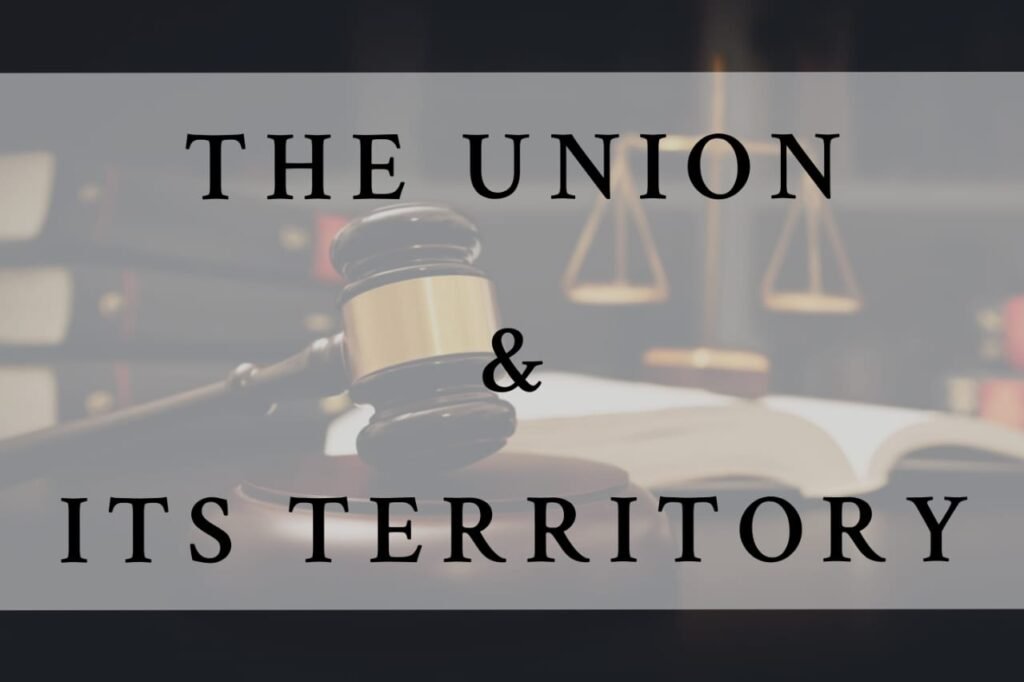
India comprises 28 States and eight Union Territories. They are Andhra Pradesh, Assam, Arunachal Pradesh, Bihar, Chhattisgarh, Goa, Gujarat, Haryana, Himachal Pradesh, Jharkhand, Karnataka, Kerala, Madhya Pradesh, Maharashtra, Manipur, Meghalaya, Mizoram, Nagaland, Odisha, Punjab, Rajasthan, Sikkim, Tamil Nadu, Telangana, Tripura, Uttarakhand, province, and province. Union Territories are Andaman and Nicobar Islands, Chandigarh, Dadra and Nagar Haveli and Daman and Diu, Capital Territory of Delhi, Jammu and Kashmir, Lakshadweep, Ladakh, and Puducherry.
Part I of The Indian Constitution is titled ‘The Union and its Territory’. It includes articles from 1 to 4. This part of the Constitution contains the law within the establishment, renaming, merging, or altering the borders of the states. This article was invoked when West Bengal was renamed and the formation of relative new states like Jharkhand, Chhattisgarh, Sikkim, and recently Telangana.
Article 1 of the Constitution declares that the sovereign democratic Republic if India ‘shall be the union of states’. The selection for a federation with a powerful center was made both for political and administrative reasons although the move to explain the Constitution as federal failed.
India, that’s Bharat, shall be a Union of States.
The States and therefore the Territory thereof shall be as laid out in the primary schedule.
The Territory of India shall comprise- [a] the territory of states; [b] the Union territories specified per the primary schedule, and [c] such other territories as is also acquired.
Article 2: Admission or Establishment of latest States, Parliament may by law admit into the Union, or establish, new States on such terms and conditions because it thinks fit. Article 2 thus gives two powers, first, to admit into union new state, and secondly, the facility of determining new states.
Article 2A: Sikkim to be related to the union…
Article 3: Formation of recent states and alteration of areas, boundaries, or names of existing states: under this text, a replacement state is formed or established in the following ways-
[a] by separation of territory from any state; or
[b] by uniting two or more states; or
[c] by uniting a part of the state; or
[d] by uniting any territory to a component of any state.
Parliament under this text, may also increase or decrease the realm of ant state or alter the boundaries or changes the name of any state. The word ‘State’ in article 3, clauses (a) to (e) includes a ‘Union territory’ also, but in provision “state” does not include a union territory.
-The power of Parliament under Article 3 to diminish the realm of any state doesn’t cover ceding of Indian territory to a foreign state. The court held that within the case Ram kishore v/s union of India, AIR 1966 SC 64, article 3 deals with internal re-adjustment inter se of the territories of the constituent states of India. The area diminished under Article 3 (c) continues to be part of the territory of India. Article 3 (c) doesn’t, therefore, provide for the cession of the territory to a far-off state. Hence, an agreement involving a transfer of territory to a far-off state can’t be implemented by just passing a law under Article 3. For this an Amendment of the constitution is necessary.
-Prior recommendation of the President of India is critical for the state creation/renaming bill. (Article 3). No such provision is mandatory under Article 2 (new state).
-Article 3 original provision was amended by Constitution (5th Amendment) Act,1955 on 24th December 1955.
Article 4: It says that any law cited in Article 2 or Article 3 will contain such provision for amendment, this text allows for consequential changes within the 1st schedule i.e names of the states within the Union of India and 4th schedule, a variety of seats allotted in the Rajya Sabha for each state, by simple majority. Constitution would not treat any law altering existing states or creating replacement States, as the amendment.
REFERENCES :
(1) www.clearias.com
(3) Book by Dr. J.N.Pandey “Constitutional law of India”
(4) Book M.P.Jain “Indian Constitutional Law”
(5) https://knowingindia.gov.in




2 Comments
Rani sharma · August 5, 2021 at 5:56 pm
Best and very helpful for my notes work
Admin · August 6, 2021 at 4:05 am
thank you